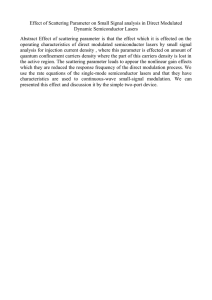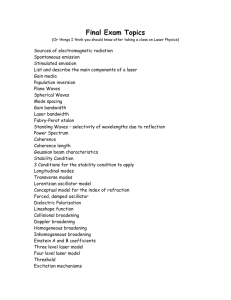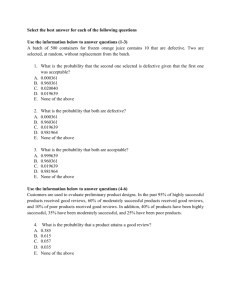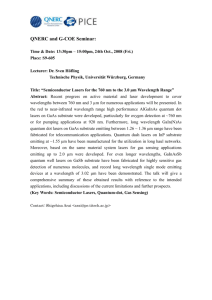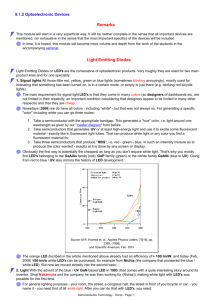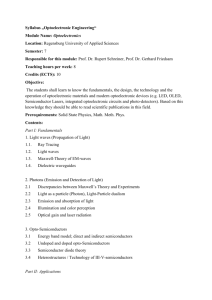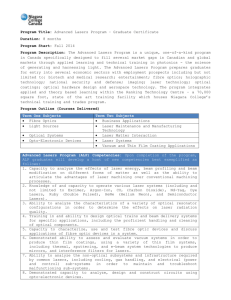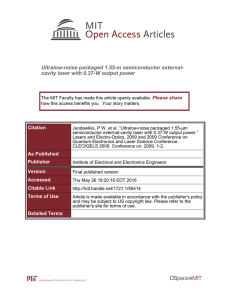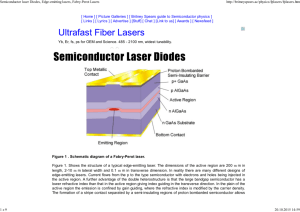Gain and refractive index in quantum
advertisement
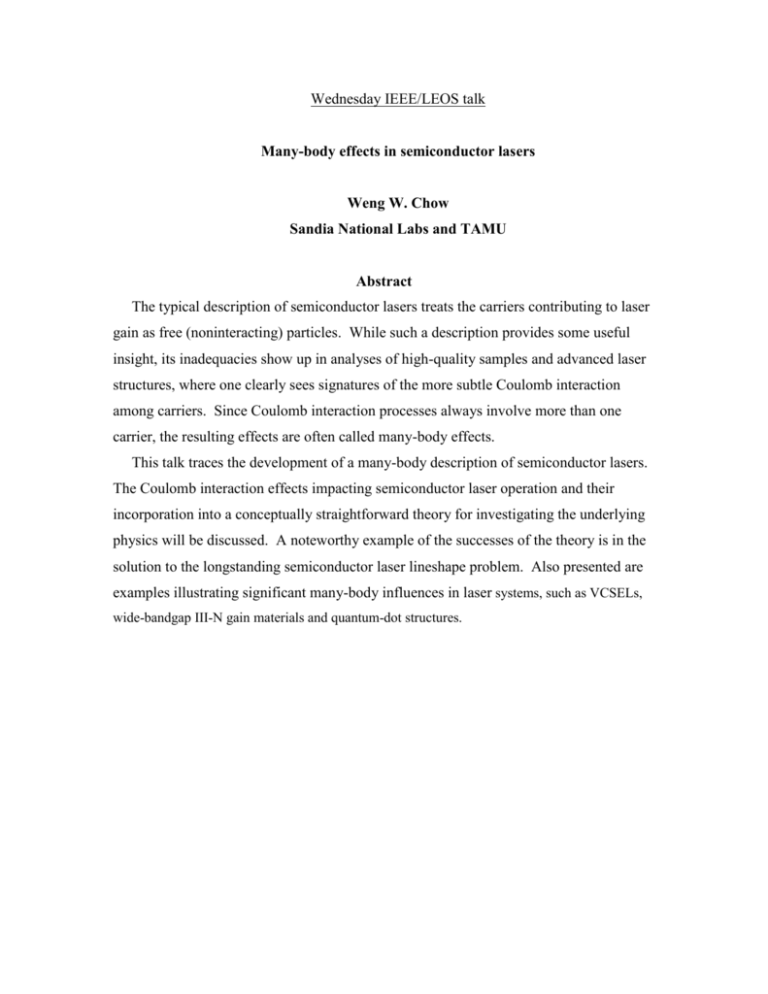
Wednesday IEEE/LEOS talk Many-body effects in semiconductor lasers Weng W. Chow Sandia National Labs and TAMU Abstract The typical description of semiconductor lasers treats the carriers contributing to laser gain as free (noninteracting) particles. While such a description provides some useful insight, its inadequacies show up in analyses of high-quality samples and advanced laser structures, where one clearly sees signatures of the more subtle Coulomb interaction among carriers. Since Coulomb interaction processes always involve more than one carrier, the resulting effects are often called many-body effects. This talk traces the development of a many-body description of semiconductor lasers. The Coulomb interaction effects impacting semiconductor laser operation and their incorporation into a conceptually straightforward theory for investigating the underlying physics will be discussed. A noteworthy example of the successes of the theory is in the solution to the longstanding semiconductor laser lineshape problem. Also presented are examples illustrating significant many-body influences in laser systems, such as VCSELs, wide-bandgap III-N gain materials and quantum-dot structures. Tuesday quantum optics seminar Gain and refractive index in quantum-dot lasers An important step towards realizing the advantages of a quantum-dot gain medium for semiconductor lasers is knowledge of the excitation dependences of gain and carrier-induced refractive index. This talk discusses the results from calculations using a microscopic theory, where we uncover complicated carrier density and electronic structure influences on the gain and linewidth enhancement factor. An example is the anomaly in the carrier density dependence of peak gain that can be attributed to the delicate balancing of state filling and dephasing in a Coulomb-coupled quantum-dot-quantum-well system.

